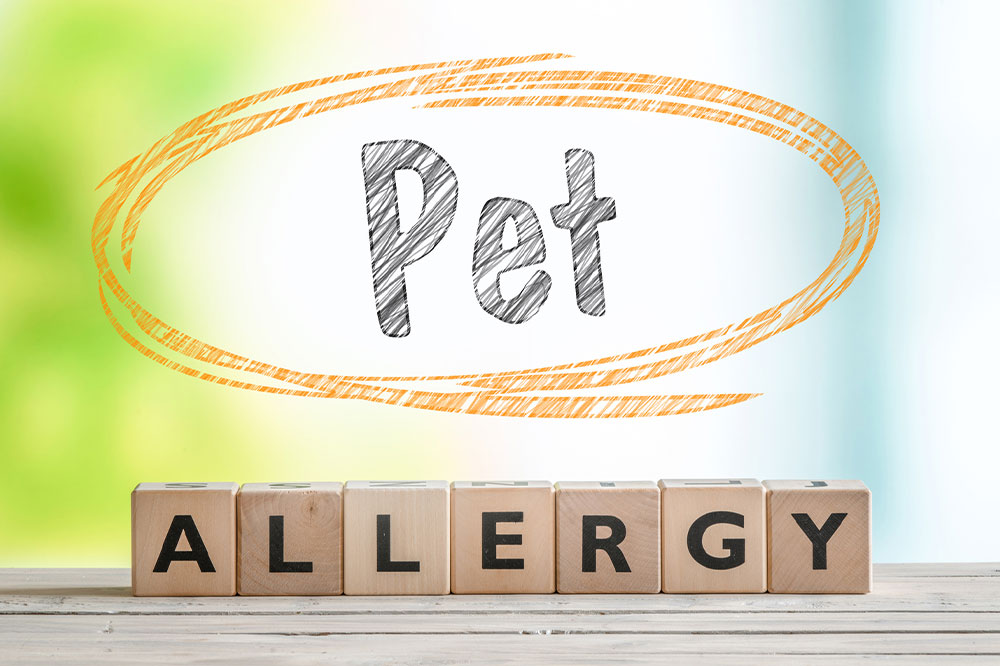
The best treatment options for pet allergy
Pet allergies are not uncommon. A study from the Asthma and Allergy Foundation of America suggests that up to 30% of Americans may be allergic to pets. To be specific, these people are allergic to proteins found in their furry friend’s skin cells, saliva, and urine. Thanks to various pet allergy treatments, pet owners need not give up their dog or cat if they or someone in their family is allergic to them. This article explains different methods to treat pet allergies. But, before that, let’s understand what pet allergies look like.
Symptoms of pet allergy
Allergens from dogs or cats often produce an inflammatory response in an individual’s nasal passages, lungs, and skin. If nasal passages and lungs are affected, a person may exhibit the following symptoms:
- Itchy, red, or watery eyes
- Itchy nose, roof of mouth, or throat
- Runny or stuffy nose
- Sneezing
- Difficulty breathing
- Bluish discoloration under the eyes
- Postnasal drip
- Facial pain and pressure
Skin symptoms of pet allergies may include:
- Itchy skin
- Hives or raised red patches
- Swelling or tenderness
- Burning sensation
The intensity of these symptoms may range from mild to severe. In some cases, symptoms may not appear for several days after exposure to allergens.
Treatment for pet allergy
There are multiple ways to treat allergic reactions from pets. Typically, the best treatment for an individual depends on the severity of their symptoms. Doctors may also suggest a combination of treatments to control allergic reactions effectively. Here are top pet allergy treatment options:
Allergy medications
There are several classes of allergy medications prescribed by doctors. These include the following.
- Antihistamines : Most doctors prescribe antihistamines for mild allergic reactions, such as runny nose, sneezing, and itchy eyes. They work by blocking the compound called histamine, which helps initiate an immune response. Some popular over-the-counter (OTC) antihistamines brands include Benadryl, Claritin, Allegra, and Clarinex.
- Corticosteroids: These come in the form of nasal sprays and can help reduce nasal inflammation, alleviating sneezing, runny or stuffy nose. Nasal corticosteroids are commonly sold under the brand names Flonase Allergy Relief, Nasonex, Nasacort Allergy 24HR, and Omnaris.
- Decongestants: These help reduce swelling in the nasal passages, making breathing easier. Some OTC medications combined an antihistamine with a decongestant. Decongestants are available as both oral tablets and nasal sprays. It’s advisable to consult with a doctor before taking decongestants as they may not be suitable for everyone. Some common decongestant brands include Afrin, Dristan, and Sinex.
Immunotherapy
The goal of immunotherapy is to help the immune system build a tolerance to pet allergens. It’s mainly for people with severe allergic reactions. Also known as allergy shots, immunotherapy involves administering injections containing allergens into the affected person. Initially, smaller doses of allergens are given, but the dosage gradually increases every four to six months. Although effective, immunotherapy works slowly. In general, a person needs to take allergy shots every four weeks for three to five years for best results.
Home remedies and lifestyle changes
Although avoiding exposure to pets is the best way to prevent and get rid of allergy symptoms, it’s not a feasible option for pet lovers. A great alternative is to equip oneself with home remedies and make certain changes at home to minimize exposure to allergens.
One simple and effective home remedy is nasal irrigation. For this, one needs to prepare a saline (saltwater) solution and pour it into a neti pot or a specially designed squeeze bottle. Nasal irrigation can expel thickened mucus and irritants from the sinuses. It’s best to learn the technique by watching a video online.
To prevent allergies from entering the body, one can do the following.
- Get rid of carpets wherever possible as they tend to collect pet dander. Also, replace upholstered furniture and remove curtains and horizontal blinds.
- Use a HEPA (high-efficiency particulate air) purifier to reduce allergens indoors.
- Give pets a thorough bath once every week.
- Clean the house regularly and wash bedsheets and blankets weekly.
- Designate a pet-free zone in the house, preferably the bedroom, and ensure pets don’t enter that space.
- Change clothing after spending too much time with pets.



